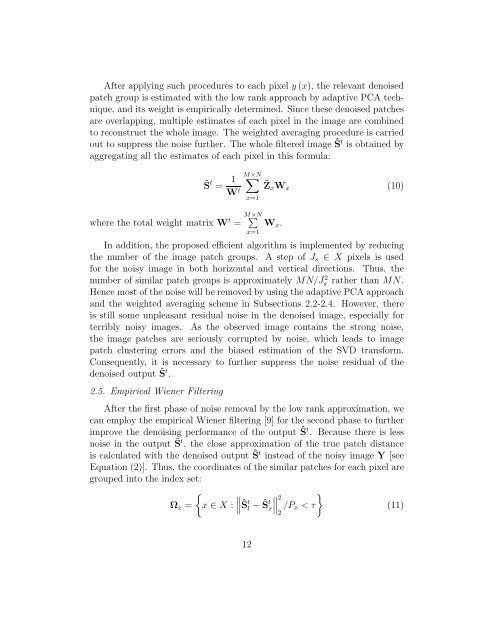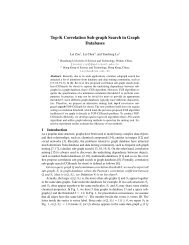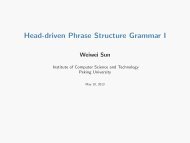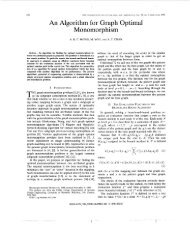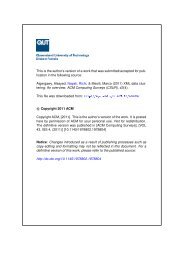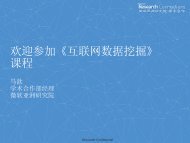Elsevier Editorial System(tm) for Information Sciences Manuscript ...
Elsevier Editorial System(tm) for Information Sciences Manuscript ...
Elsevier Editorial System(tm) for Information Sciences Manuscript ...
You also want an ePaper? Increase the reach of your titles
YUMPU automatically turns print PDFs into web optimized ePapers that Google loves.
After applying such procedures to each pixel y(x), the relevant denoised<br />
patch group is estimated with the low rank approach by adaptive PCA technique,<br />
and its weight is empirically determined. Since these denoised patches<br />
are overlapping, multiple estimates of each pixel in the image are combined<br />
to reconstruct the whole image. The weighted averaging procedure is carried<br />
out to suppress the noise further. The whole filtered image Ŝ t is obtained by<br />
aggregating all the estimates of each pixel in this <strong>for</strong>mula:<br />
Ŝ t = 1 M×N<br />
∑<br />
W t<br />
x=1<br />
where the total weight matrix W t = M×N ∑<br />
x=1<br />
Ẑ x W x (10)<br />
W x .<br />
In addition, the proposed efficient algorithm is implemented by reducing<br />
the number of the image patch groups. A step of J s ∈ X pixels is used<br />
<strong>for</strong> the noisy image in both horizontal and vertical directions. Thus, the<br />
number of similar patch groups is approximately MN/Js 2 rather than MN.<br />
Hence most ofthenoisewill beremoved by using theadaptive PCAapproach<br />
and the weighted averaging scheme in Subsections 2.2-2.4. However, there<br />
is still some unpleasant residual noise in the denoised image, especially <strong>for</strong><br />
terribly noisy images. As the observed image contains the strong noise,<br />
the image patches are seriously corrupted by noise, which leads to image<br />
patch clustering errors and the biased estimation of the SVD trans<strong>for</strong>m.<br />
Consequently, it is necessary to further suppress the noise residual of the<br />
denoised output Ŝ t .<br />
2.5. Empirical Wiener Filtering<br />
After the first phase of noise removal by the low rank approximation, we<br />
can employ the empirical Wiener filtering [9] <strong>for</strong> the second phase to further<br />
improve the denoising per<strong>for</strong>mance of the output Ŝ t . Because there is less<br />
noise in the output Ŝ t , the close approximation of the true patch distance<br />
is calculated with the denoised output Ŝ t instead of the noisy image Y [see<br />
Equation (2)]. Thus, the coordinates of the similar patches <strong>for</strong> each pixel are<br />
grouped into the index set:<br />
{<br />
}<br />
∥<br />
Ω x = x ∈ X : ∥Ŝt l −Ŝt x∥ 2 x < τ (11)<br />
2/P<br />
12


